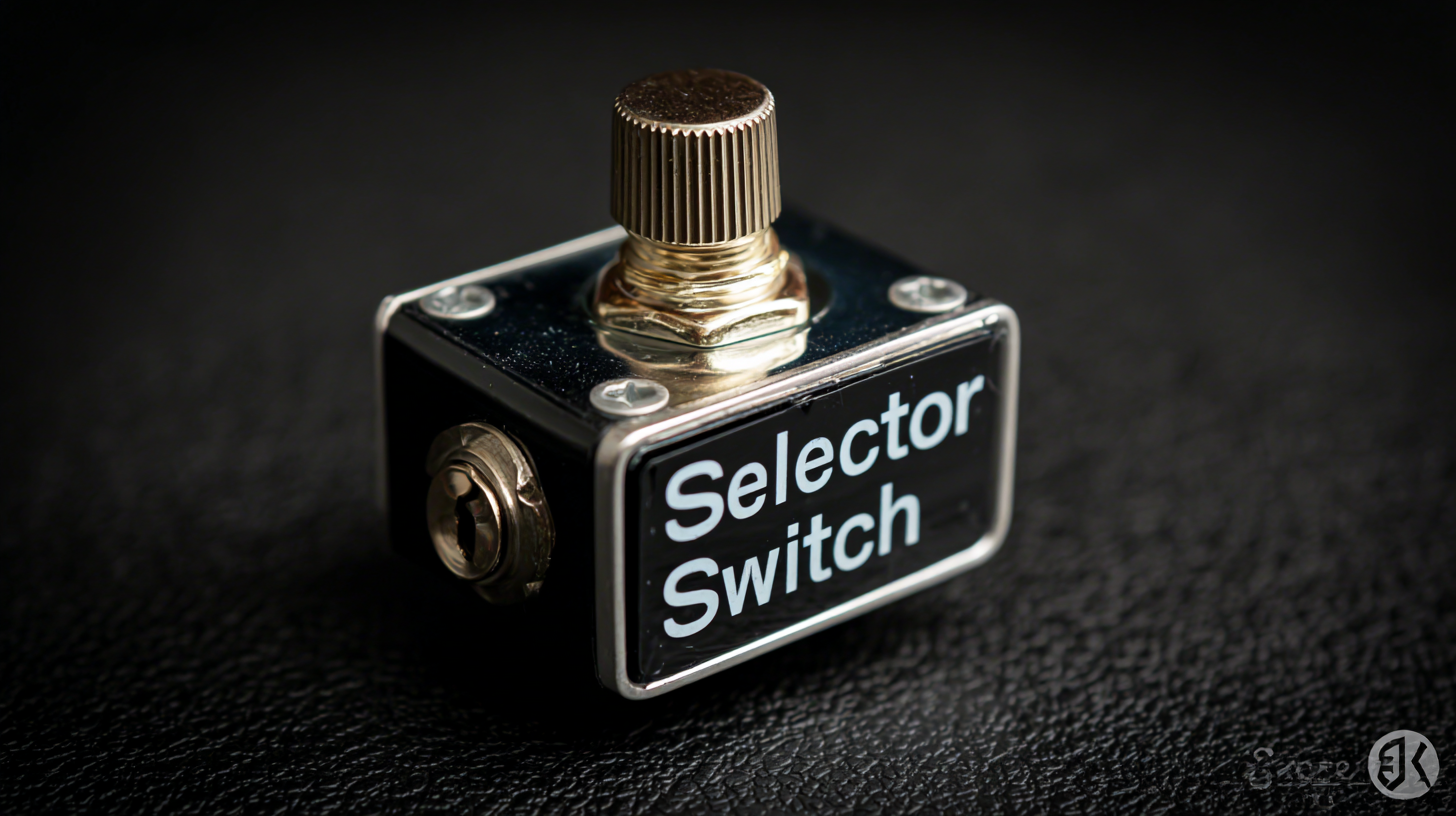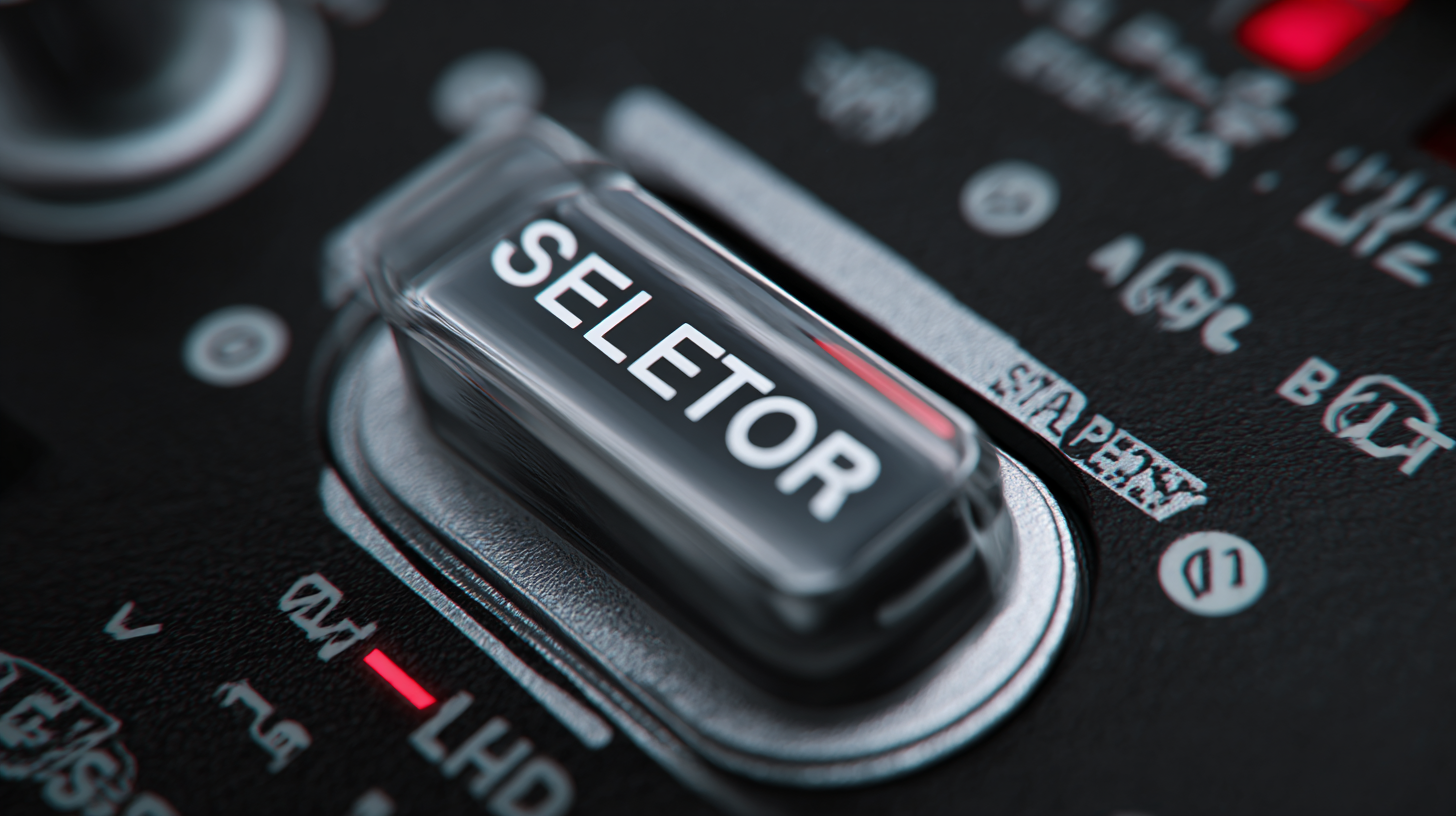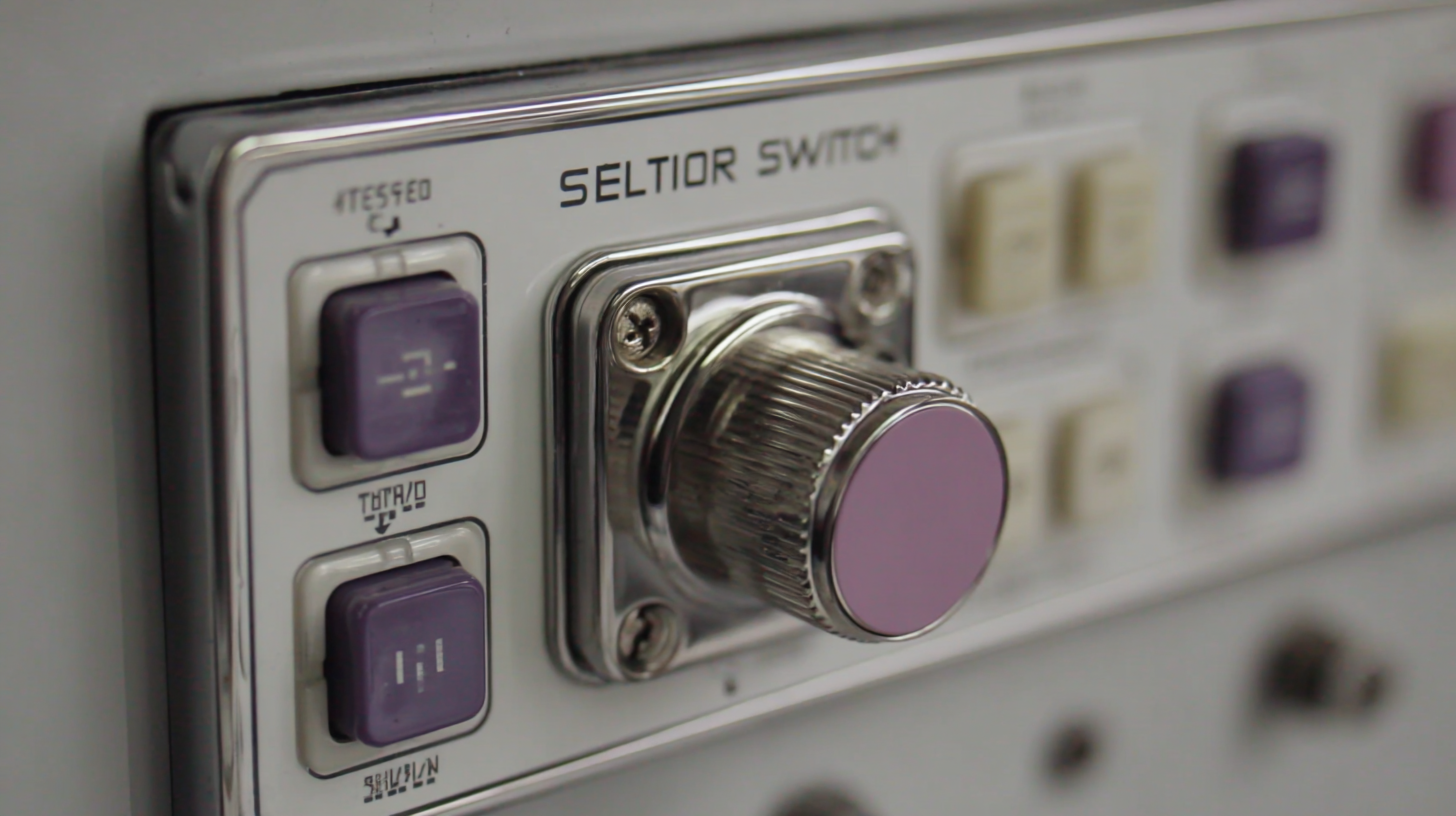
Unveiling the Technical Specifications of the Best Selector Switch for Optimal Performance
In the realm of industrial automation, the choice of components significantly impacts system efficiency and reliability. Among these essential components, the Selector Switch stands out as a pivotal device that allows operators to effectively control machinery and processes. This blog aims to unveil the technical specifications of the best Selector Switch available in the market, ensuring optimal performance for various applications. By delving into the characteristics such as durability, electrical ratings, and user interface design, we will provide a comprehensive understanding of what distinguishes a top-tier Selector Switch from the rest. Furthermore, we will guide readers through the selection process, offering practical insights on how to choose the right Selector Switch tailored to specific operational needs. Whether you're an engineer, technician, or purchasing manager, this detailed exploration promises valuable information to enhance your decision-making process in selecting the most suitable Selector Switch for your projects.

Key Features to Look for in the Best Selector Switch for Performance
When selecting the best selector switch for optimal performance, several key features must be considered. First and foremost is the switch's electrical rating, which is crucial for ensuring it can handle the workload of the application. According to a recent report by MarketsandMarkets, a selector switch with a rating of at least 10A at 250V is essential for most industrial applications, as this specification ensures reliability and longevity under high-stress conditions. Additionally, the materials used in the construction of the switch play a significant role in its durability; switches made from high-quality thermoplastics and stainless steel components significantly outperform their counterparts in harsh environments.

Another critical factor is the switch's actuation style, which can impact user experience and operational efficiency. Research from Global Industry Analysts indicates that rotary and toggle switch designs dominate the market due to their intuitive use and reliability. Furthermore, some advanced selector switches offer customizable features, such as LED indicators and multi-position settings, which enhance functionality while minimizing user error. As industries increasingly move towards automation, selecting a switch that integrates seamlessly with digital systems is vital. Consequently, a thorough understanding of these features will empower industries to make informed decisions that align with their operational needs.
Comparative Analysis of Top Selector Switch Models in the Market
When it comes to selector switches, the selection of the right model can significantly impact the performance of your electrical system. Among the top contenders on the market, three models stand out for their unique technical specifications and reliability. The first is the Schneider Electric 9001 series, known for its robust construction and a wide range of actuation styles. Its ergonomic design and high IP rating make it ideal for harsh environments, providing peace of mind for demanding applications.
Another noteworthy model is the Siemens 3SB switch, which excels in versatility and ease of installation. With customizable options and various configurations, it caters well to different operational needs. Additionally, its compact size allows for space-saving setups, making it a favorite for panel builders. Lastly, the Eaton 22mm series combines modern aesthetics with reliable functionality, featuring a user-friendly interface and a range of illumination options. This comprehensive comparison highlights how each model's design and specifications can cater to different preferences and requirements in industrial applications.
Comparison of Selector Switch Models Performance
Understanding the Technical Specifications that Enhance Selector Switch Functionality
When it comes to maximizing the functionality of selector switches, understanding their technical specifications is crucial. These switches are designed to provide seamless control and switching between different functions, enhancing the overall user experience in various applications. Factors such as contact configuration, current ratings, and mounting options significantly impact how effectively a selector switch can operate in different environments. For instance, a switch with multiple positions might offer more versatility, allowing users to easily adapt their setups for different tasks.
Moreover, just like the evolving controls in popular gaming consoles that enhance user interaction, integrating advanced features in selector switches can significantly improve performance. Specifications that allow for smoother operation, higher durability, and better feedback mechanisms ensure that users can rely on their switches under demanding circumstances. By focusing on suitable technical specifications, users can harness the full potential of selector switches, ensuring they meet both current and future needs while reinforcing overall system efficiency.
Installation and Maintenance Tips for Optimal Selector Switch Performance
When it comes to selecting and maintaining a high-performing selector switch, understanding installation and upkeep tips is essential for optimal functionality. Superior selector switches often feature technical specifications that include features such as robust contacts, rated voltage, and durability ratings, often reaching up to 10,000 cycles in demanding applications. To maximize the performance of your switch, it is crucial to adhere to manufacturer guidelines during installation. This includes ensuring proper alignment and securing connections to prevent mechanical failures.
Regular maintenance is equally important. Ensure that contacts are clean and free of debris, as contaminants can lead to poor performance and potential operational failures. Additionally, periodic testing of the switch under load conditions can help identify any degradation in performance before it becomes a significant issue. A survey indicated that 60% of equipment failures stem from inadequate maintenance procedures, thus emphasizing the need for routine checks.
Tips:
- Always refer to the installation manual for specific torque settings and mounting requirements.
- Utilize dielectric grease on terminals to shield against corrosion.
- Schedule bi-annual inspections to address any wear and tear proactively, enhancing the lifecycle of your selector switch.
Real-World Applications of Selector Switches in Various Industries
 Selector switches play a crucial role in numerous industries, enhancing control and functionality. Their versatility can be observed in real-world applications, ranging from manufacturing processes to advanced medical technologies. For instance, the recent rise of home fitness solutions blended with medical care demonstrates the potential of selector switches in creating user-friendly interfaces that facilitate diverse functions in a single device. As companies innovate, the integration of selector switches in virtual reality and telehealth solutions is revolutionizing how we approach wellness.
Selector switches play a crucial role in numerous industries, enhancing control and functionality. Their versatility can be observed in real-world applications, ranging from manufacturing processes to advanced medical technologies. For instance, the recent rise of home fitness solutions blended with medical care demonstrates the potential of selector switches in creating user-friendly interfaces that facilitate diverse functions in a single device. As companies innovate, the integration of selector switches in virtual reality and telehealth solutions is revolutionizing how we approach wellness.
When implementing selector switches in various applications, consider the following tips: First, ensure that the switch is ergonomically designed to improve user engagement. A comfortable and intuitive interface encourages frequent use and enhances overall user experience. Second, select a switch that meets the required technical specifications to withstand the operational demands of your specific industry, such as temperature variations or exposure to hazardous materials. Finally, always evaluate the compatibility of the switch with the existing systems to maximize efficiency and reduce operational disruptions.
Such strategies not only improve functionality but also pave the way for innovative solutions, particularly in sectors that require precise user interaction, like healthcare and fitness technologies. By understanding and leveraging the advantages of selector switches, industries can better adapt to the challenges of modern demands.
